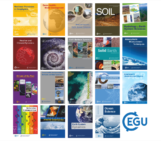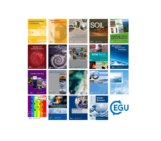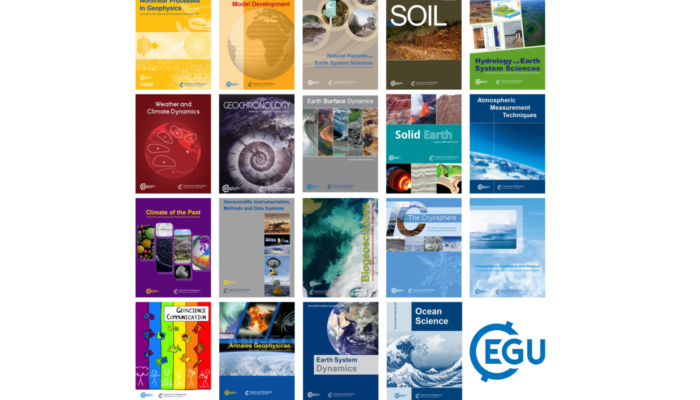
Each month we feature specific Divisions of EGU and during the monthly GeoRoundup we will be putting the journals that publish science from those Divisions at the top of the Highlights roundup. For January, the Divisions we are featuring are: Atmospheric Sciences (CR), and Earth and Space Science Informatics (ESSI). They are served by the journals: Geoscientific Model Development (GMD), Annales Geophysicae (ANGEO), Atmospheric Chemistry and Physics (ACP), Atmospheric Measurement Techniques (AMT), Geoscientific Instrumentation, Methods and Data Systems (GI), SOIL and Weather and Climate Dynamics (WCD).
Featured highlights
Atmospheric Chemistry and Physics:
 The dual-field-of-view polarization lidar technique: a new concept in monitoring aerosol effects in liquid-water clouds – theoretical framework – 5 January 2021
The dual-field-of-view polarization lidar technique: a new concept in monitoring aerosol effects in liquid-water clouds – theoretical framework – 5 January 2021
A novel lidar method to study cloud microphysical properties (of liquid water clouds) and to study aerosol–cloud interaction (ACI) is developed and presented in this paper. In Part 1, the theoretical framework including an error analysis is given together with an overview of the aerosol information that the same lidar system can obtain. The ACI concept based on aerosol and cloud information is also explained. Applications of the proposed approach to lidar measurements are presented in Part 2.
Optical characterization of pure pollen types using a multi-wavelength Raman polarization lidar – 7 January 2021
Measurements of the multi-wavelength Raman polarization lidar Polly XT have been combined with measurements of pollen type and concentration using a traditional pollen sampler at a rural forest site in Kuopio, Finland. The depolarization ratio was enhanced when there were pollen grains in the atmosphere, illustrating the potential of lidar to track pollen grains in the atmosphere. The depolarization ratio of pure pollen particles was assessed for birch and pine pollen using a novel algorithm.
Tropical Pacific climate variability under solar geoengineering: impacts on ENSO extremes – 11 January 2021
Solar geoengineering has been introduced to mitigate human-caused global warming by reflecting sunlight back into space. This research investigates the impact of solar geoengineering on the tropical Pacific climate. We find that solar geoengineering can compensate some of the greenhouse-induced changes in the tropical Pacific but not all. In particular, solar geoengineering will result in significant changes in rainfall, sea surface temperatures, and increased frequency of extreme ENSO events.
Long-term deposition and condensation ice-nucleatingparticle measurements from four stations across the globe – 20 January 2021
Long-term ice-nucleating particle (INP) data are presented from four semi-pristine sites located in the Amazon, the Caribbean, Germany and the Arctic. Average INP concentrations did not differ by orders of magnitude between the sites. For all sites short-term variability dominated the time series, which lacked clear trends and seasonalities. Common drivers to explain the INP levels and their variations could not be identified, illustrating the complex nature of heterogeneous ice nucleation.
Atmospheric Measurement Techniques:
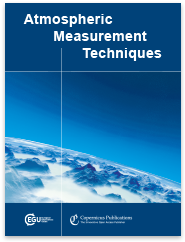 Combined use of Mie–Raman and fluorescence lidar observations for improving aerosol characterization: feasibility experiment – 6 January 2021
Combined use of Mie–Raman and fluorescence lidar observations for improving aerosol characterization: feasibility experiment – 6 January 2021
To study the feasibility of a fluorescence lidar for aerosol characterization, the fluorescence channel is added to the multiwavelength Mie-Raman lidar of Lille University. A part of the fluorescence spectrum is selected by the interference filter of 44 nm bandwidth centered at 466 nm. Such an approach has demonstrated high sensitivity, allowing fluorescence signals from weak aerosol layers to be detected. The technique can also be used for monitoring the aerosol inside the cloud layers.
Quantifying CO2 emissions of a city with the Copernicus Anthropogenic CO2 Monitoring satellite mission – 13 January 2021
The European CO2M mission is a proposed constellation of CO 2 imaging satellites expected to monitor CO 2 emissions of large cities. Using synthetic observations, we show that a constellation of two or more satellites should be able to quantify Berlin’s annual emissions with 10–20 % accuracy, even when considering atmospheric transport model errors. We therefore expect that CO2M will make an important contribution to the monitoring and verification of CO 2 emissions from cities worldwide.
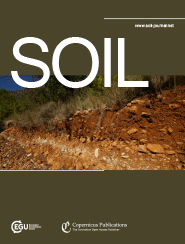 Iron and aluminum association with microbially processed organic matter viameso-density aggregate formation across soils: organo-metallic gluehypothesis -1 January 2021
Iron and aluminum association with microbially processed organic matter viameso-density aggregate formation across soils: organo-metallic gluehypothesis -1 January 2021
Global significance of metals (extractable Fe and Al phases) to control organic matter (OM) in recognized. Next key questions include the identification of their localization and mechanism behind OM–metal relationships. Across 23 soils of contrasting mineralogy, Fe and Al phases were mainly associated with microbially processed OM as meso-density microaggregates. OM- and metal-rich nanocomposites with a narrow OM : metal ratio likely acted as binding agents. A new conceptual model was proposed.
Other highlights
Southern Ocean Biogeochemical Argo detect under-ice phytoplankton growth before sea ice retreat – 22 January 2021
Sea ice dynamics in the Bransfield Strait, Antarctic Peninsula, during the past 240 years: a multi-proxy intercomparison study – 8 January 2021
Plateaus and jumps in the atmospheric radiocarbon record – potential origin and value as global age markers for glacial-to-deglacial paleoceanography, a synthesis – 21 January 2021
Biases in the albedo sensitivity to deforestation in CMIP5 models and their impacts on the associated historical radiative forcing – 14 January 2021
Emergent constraints on equilibrium climate sensitivity in CMIP5: do they hold for CMIP6? – 19 January 2021
Evaluating the dependence structure of compound precipitation and wind speed extremes – 26 January 2021
Hydrology and Earth System Sciences:
Intercomparison of freshwater fluxes over ocean and investigations into water budget closure – 27 January 2021
Natural Hazards and Earth System Sciences:
New global characterisation of landslide exposure – 12 January 2021
Downsizing parameter ensembles for simulations of rare floods – 15 January 2021
Glider-based observations of CO2 in the Labrador Sea – 25 January 2021
EGU Science in the News
A snapshot of recent English-speaking news coverage from around the globe based on research published in EGU’s 19 open access journals:
- Hikers find ‘hair ice’ clinging to trees In an Irish forest, Technology Times
- Using ancient fossils and gravitational-wave science to predict earth’s future, Bioengineer
- Major drought in Middle Ages could have parallels to climate change today, Heritage Daily
- Global ice loss accelerating at record rate, study finds, The Guardian
- Video: Climate scientists say world’s ice is melting faster than ever, Daily Mail
- Climate scientists recommend ways to boost the value of virtual conferences and reduce carbon footprints even when travel curbs ease. Nature

